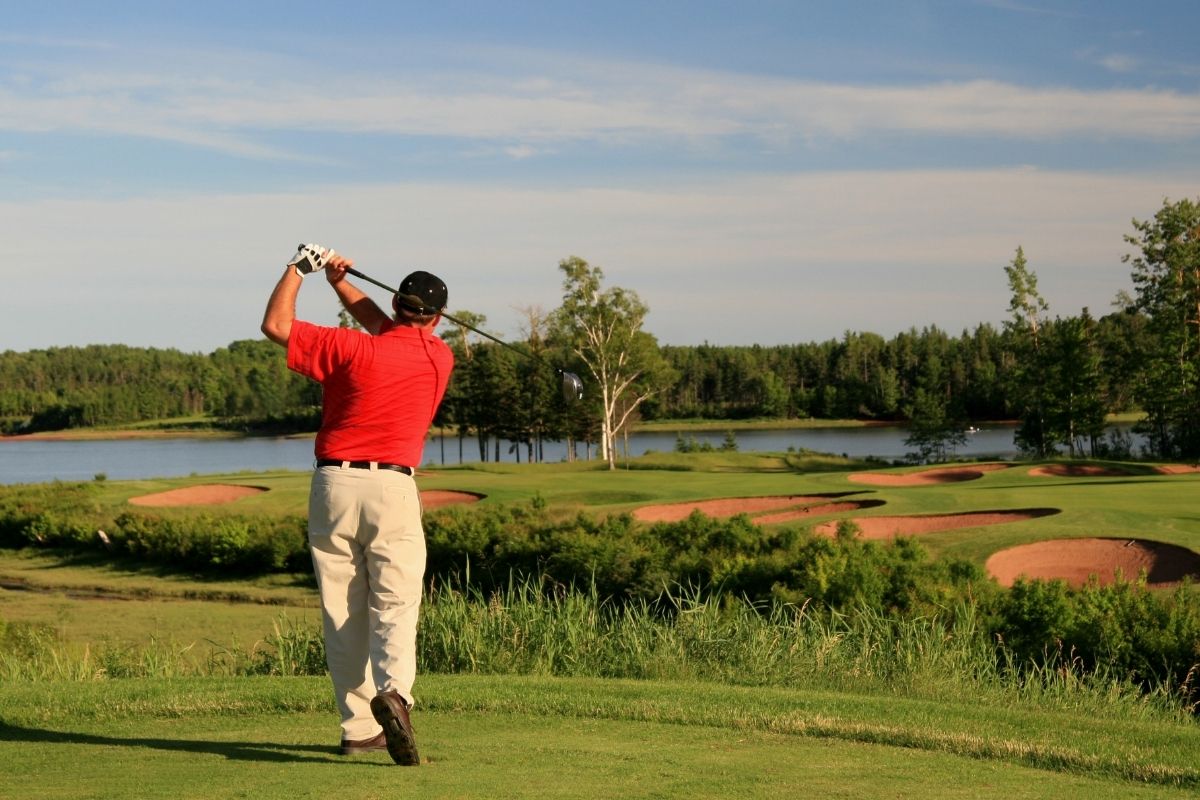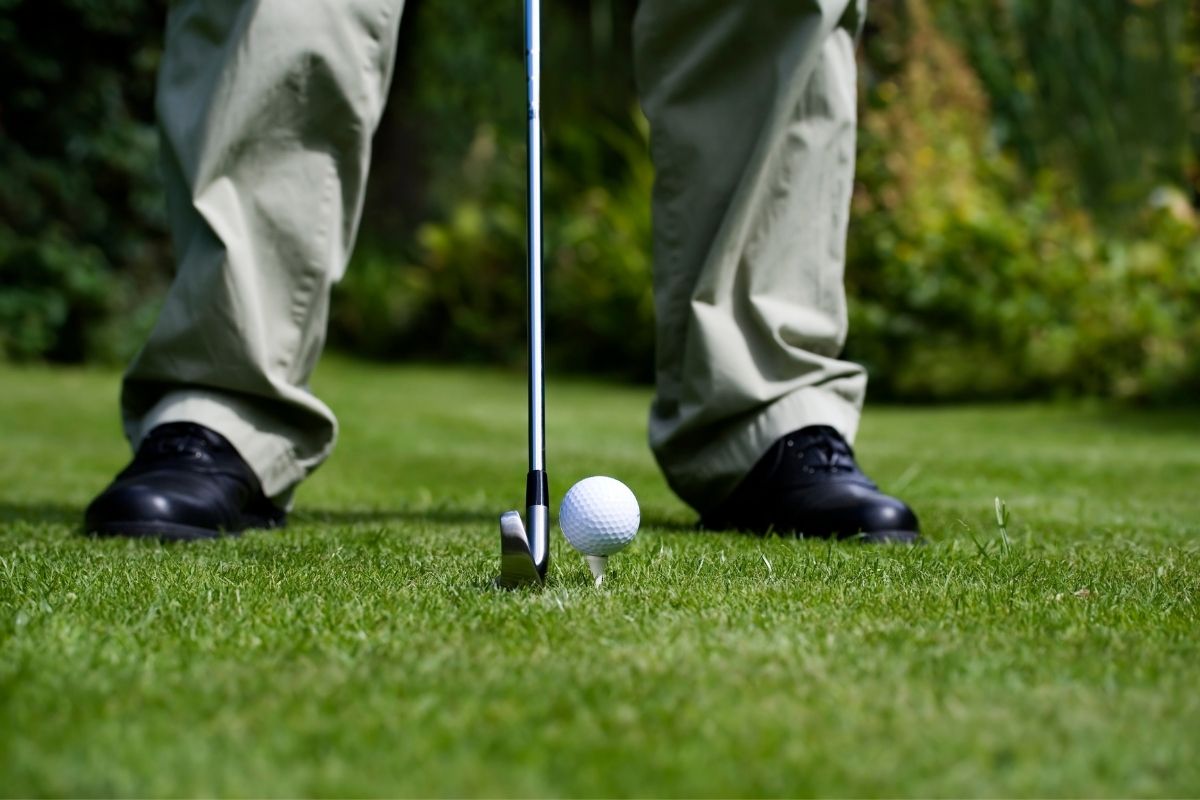We occasionally recommend products we love and might be paid a share of the sale.
Golf is a challenging sport. As you search for golf swing secrets, your mind is likely to be inundated with several opposing swing theories. Overall, golf is a terrific sport, but many of us wish we could play with more regularity.
The more I play this game, the more I realize how important it is to keep my swing basic and execute an athletic motion.
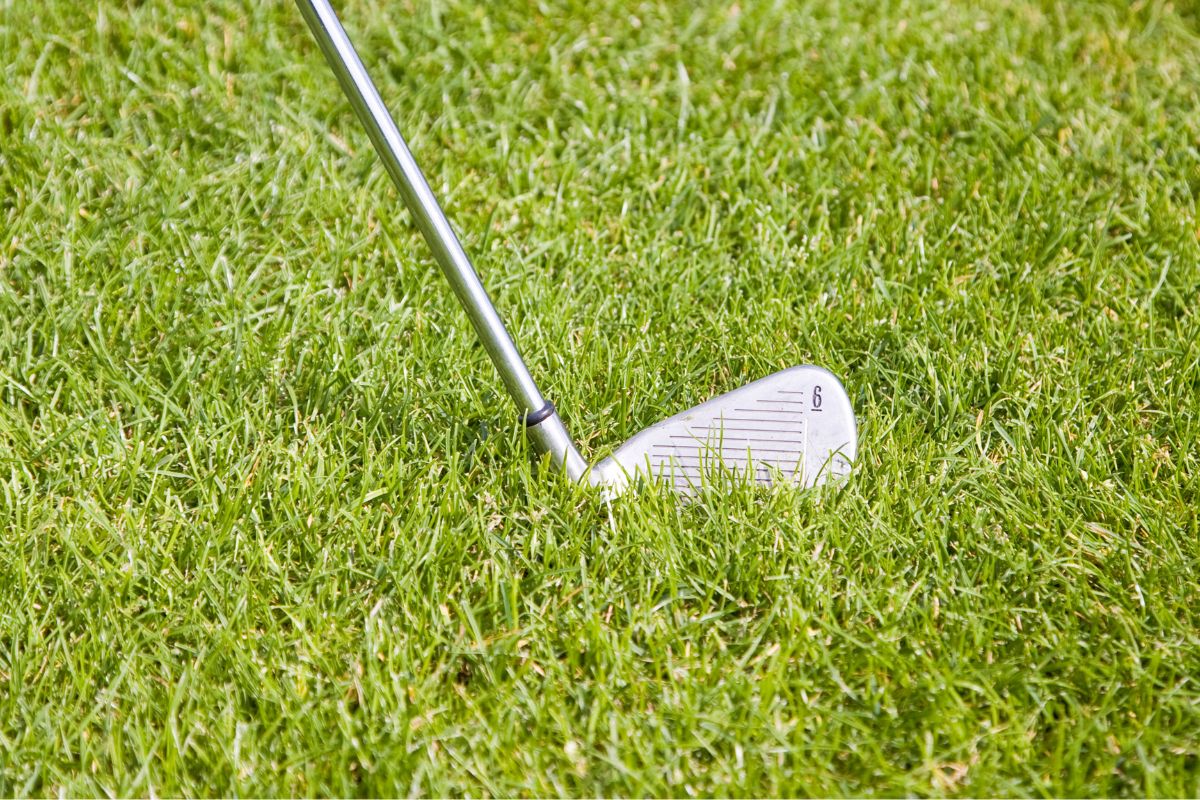
You may doubt your ball contact, the way the ball will curve, and your swing speed to get the ball to the green with a 6-iron shot between 160 and 185 yards.
As a result, you swing harder and sacrifice touch with the ball, resulting in an unsatisfactory shot. As soon as many golfers exceed 150 yards, their confidence plummets, and their fear increases.
The following five keys, each followed by a corresponding tip, are intended to help you improve your 6 iron and, hopefully, all of your irons.
The following five suggestions apply to each club in your bag. I do not believe it is important to adapt your swing from club to club.
With the exception of the putter, you should perform a comparable golf swing movement with each club in your bag, notwithstanding the likelihood of small setup and ball-positioning changes.
What Is A 6 Iron?
The six iron has less loft than other golf clubs, therefore you must be able to strike the ball cleanly when employing it.
With the six iron in play, there are a few crucial things to remember for success. With a six iron in hand, you have some ability to control the flight of your golf shots.
Controlling the loft is essential because it allows you to execute shots that would otherwise be difficult with certain golf clubs. For instance, when performing a knockdown shot with a nine-iron, the ball may accidently launch excessively high off the ground.
Therefore, it makes more sense to use a club like a six-iron, which helps you to keep the ball low and puncture the air in a different way.
If golfers choose their equipment with care, they should not have problems with ball flight. If you are careful of the lofts you choose and the clubs you utilize, controlling the overall flight of the ball will be much easier.
In windy golf conditions, the six iron is frequently a reliable club. On windy days when the wind continues to hurl the golf ball, the six iron excels at cutting through the wind.
When it is tough to prevent the ball from ballooning and moving, the loft on a six-iron might be helpful. If you can learn to swing the club with control, you may be able to use the six-iron from a range of distances.
The six iron may be an excellent club for driving the ball out of challenging positions. Those who regularly lose the ball in the woods might use the six iron to get back into play.
Frequently, golfers use a club such as a pitching wedge to help the punchout, only to have the ball land in the fairway.
When Would I Use A 6 Iron?
You may use a 6-iron from the tee in some circumstances. Additionally, this golf club also proves its merit on the fairway. The 6-iron can be helpful to control your approach shots to the green.
If you are an intermediate golfer or a professional rather than an amateur, utilizing a 6 iron as a mid-iron will often improve your game and be an obvious choice in many situations. Consider carrying a 6-iron as one of your 14 golf clubs if you have mastered the game’s fundamentals.
If you are a recreational golfer looking for a club to hit the ball from 150 to 170 yards or more out from the hole, a 6-iron will certainly come in handy. Professionals, on the other hand, may easily cover 200 yards with the same club.
If you want to hit the ball over a tree or land it softly on the green, you should choose a 6-iron so that the ball doesn’t roll too far.
When you want your shots to be more exact than with woods, you may also use a 6 iron, but you may have to sacrifice distance.
How Far Can You Hit A 6 Iron?
Depending on your club speed, the distance of your six-carry iron will change accordingly. With a club speed of 65 mph, a six-iron will carry around 125 to 130 yards.
The carry distances for clubs traveling at 75 mph, 85 mph, and 95 mph will be around 150 yards, 172 to 175 yards, and 195 to 200 yards, respectively.
With a 6-iron, the average distance for a professional golfer is 183 yards.
The average distance of a six-iron golf club is 150 yards (137 meters). PGA Tour players hit the ball between 180 and 190 yards on average.
Several golfers frequently achieve 170 to 180 yards with their 6 irons. There is a 10-yard spacing between irons for the average playyer.
Check out our golf club distance guide for more information on how much distance your can expect from each of your clubs.
What Is A 6 Irons Loft Angle?
The usual loft angle for a 6-iron is 31 degrees.
However, the loft angle of different manufacturers’ 6 iron golf clubs tends to vary significantly. Moreover, there are instances in which the same manufacturer provides six irons with differing loft angles.
Blade type 6 irons typically have loft angles between 30 and 31 degrees. In comparison, the game enhancement category for 6 irons consists of loft angles between 23° and 28° that are lower and more powerful.
The majority of golfers choose a 6-iron with a 27° or 29° loft.
What Is The Best Way To Hit A 6 Iron?
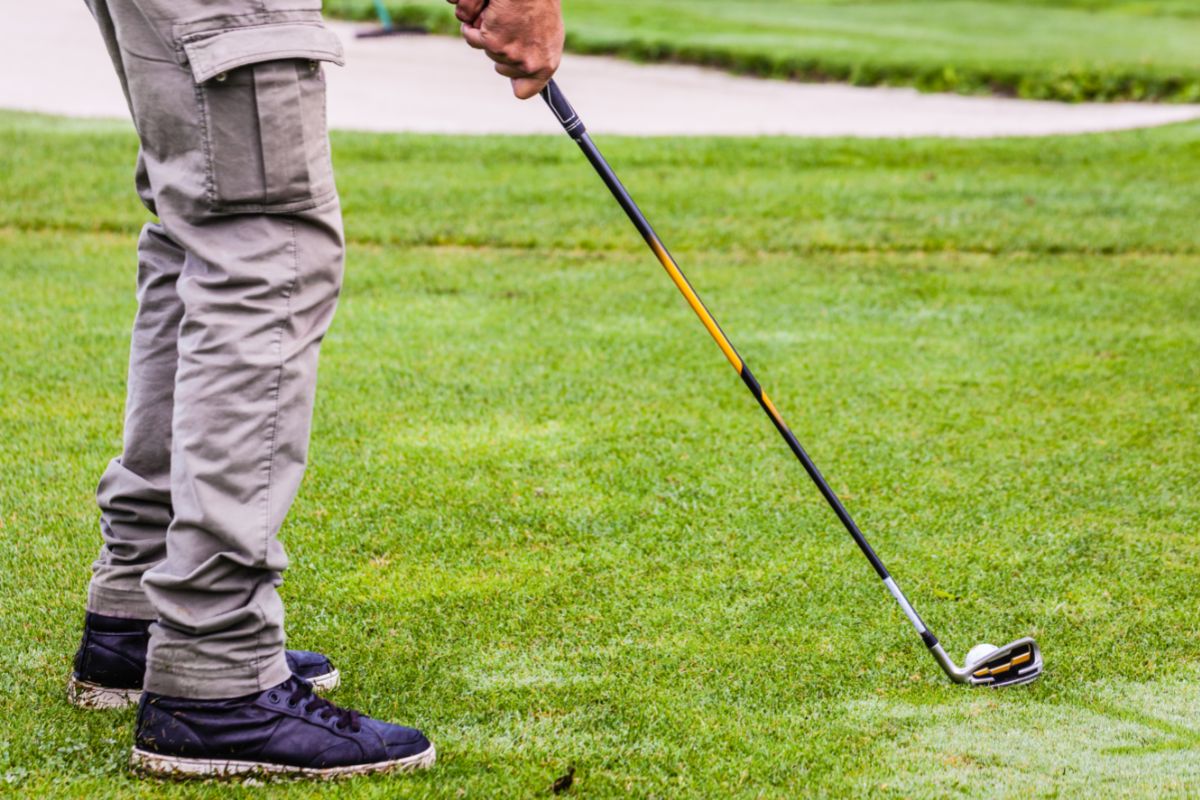
There are five keys to hitting a 6-iron successfully. They comprise:
Have A Specific And Concise Aim
Aim small miss small is a common saying among golf coaches. Often, we are excessively focused on ball contact as opposed to making a natural, athletic motion by throwing our clubs and hands toward the goal.
A swing that is manipulated because you are seeking to control every part of your swing and the trajectory of the ball will result in poor performance and a miserable four-hour ordeal on the golf course.
Focus on the target and release control in order to gain accuracy. It all begins with establishing a specific objective and focusing on it during the swing. Stop contemplating every detail of your hand, shoulder, and head positions.
Adopt a more athletic and natural motion, allow gravity to assist you, to recover the enjoyment of your game.
Always Strike The Ground In The Same Location
Did you know that the fundamental difference between golfers with a high handicap and those with a lower handicap is the ability to control where the club hits the ground?
The golfer with the higher handicap will have a wide variety of club impact positions. Occasionally, this can be as far as 4 or 5 inches behind or even over the ball without ever touching the ground.
All of these challenges come from an inability to transfer adequate weight continually to the front foot. When the weight remains too far back, it is necessary to either strike the ball into the ground or swing over it.
Both misses result from a lack of weight transfer control or inadequate forward weight distribution. This becomes especially crucial as irons go longer, notably with the 6-iron.
It is recommended to place slight more of your weight on your front foot and practice half-to-three-quarter swings until you can consistently strike the ground in the same position 90% of the time.
Try purchasing some basic yard paint and painting a line to determine whether you can consistently hit the front or target side of the line. If this is tough for you, your weight may be too far back, and you should consider making an adjustment.
Manage The Curvature Of The Ball
You may be wondering, “You want me to control the ball, yet my handicap is 20?” I feel that all handicap levels of golfers should have a fundamental understanding of ball flight regulations and how to handle the ball in both directions.
It is quite difficult to line the clubface with the swing path on every stroke. What if you could consistently play a draw, fade, or even both, depending on the course and shot? Never is it too soon to understand
The golfing world was unsure about the rules guiding ball flight for many years. Conventional wisdom held that the ball started in the direction of the path and then curved relative to the clubface.
In reality, however, the ball will begin where the clubface is pointing at impact and then bend in accordance with the course of the swing. Here are the two essentials you must keep in mind:
- At impact, the ball will begin in the direction of the clubface.
- The ball will curve relative to the swing path’s direction.
Due to the rules of ball flight, a slice could occur regardless of whether the club face is open/closed. An open or closed club face may be used to accomplish a draw. The club face will make contact with the point where the ball begins its flight and then bend relative to the trajectory of the ball.
Swing With The Right Speed
The reality of the golf swing is that swing speed must be sufficient to reach the desired distance. Distance has taken control of the sport, and it is now critical to the success of professional tour players.
You should be able to hit your 6 iron over 150 yards, and ideally between 160 and 180 yards.
Swing more rapidly. This will not only improve your 6 irons but the rest of your bag as well.
Strategize Your Game Management
To be successful, the majority of clubs must play to the greater sections of the greens. You will have a competitive advantage over your opponents if you can aim for the larger areas and then maneuver the ball towards the flag.
This pertains to the third key, which is the ability to manage the curvature of your golf ball. This broadens fairways and enhances your ability to reach greens in regulation. This will boost your confidence with the 6-iron as you stand there in horror.
Replace this anxiety with the confidence that you will strike the ball firmly, with adequate swing speed, and under control of the ball’s curve.
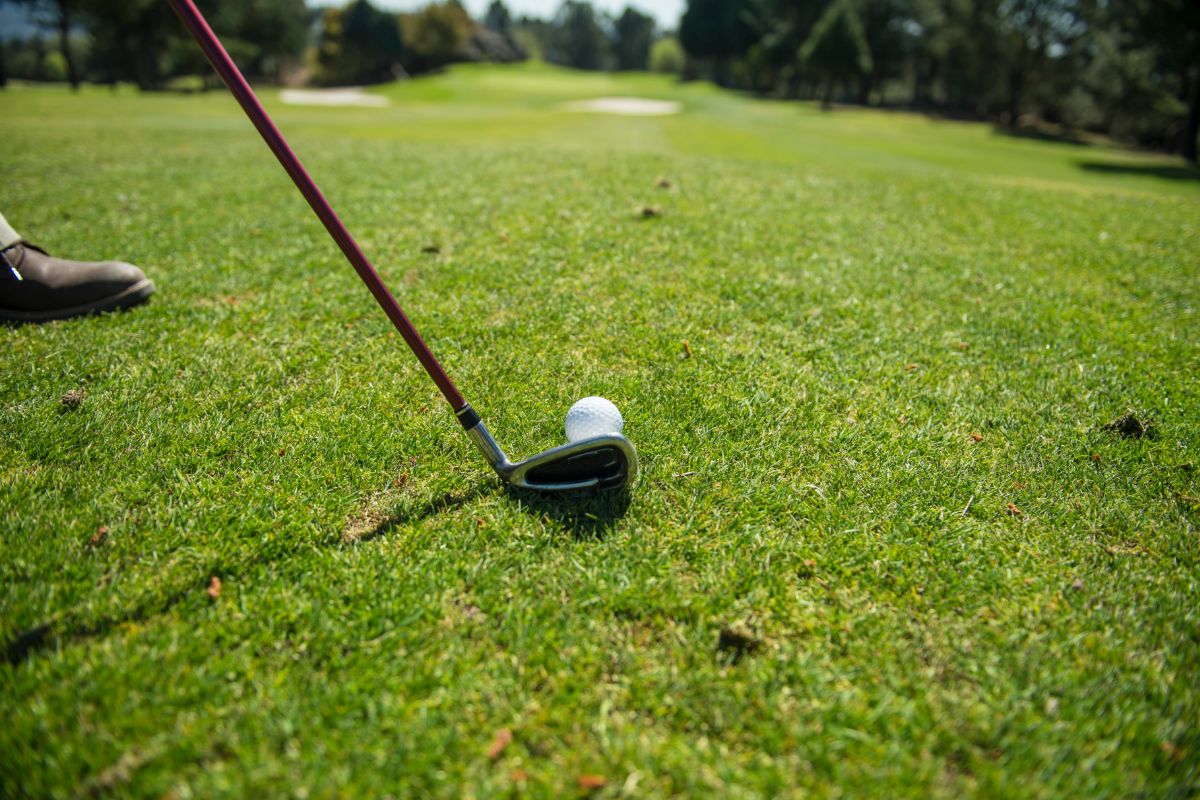
Final Thoughts
Investing a short bit of time in your six iron will result in exceptional performance overall. Significant advantages of the six iron include the capacity to produce spin and ball flight, as well as the ability to hit the ball far.
It is sufficient for players who care about having a complete set of clubs to guarantee that they have the adequate swing speed to consistently stroke their six iron.
If you do not, consider fitting a shorter or lighter shaft and seeing how this impacts the performance of your golf club.
Serious golfers who can execute a variety of shots continue to find the six iron to be an indispensable tool. If you cannot keep the ball low, it might cost you precious strokes.
Those who have difficulty achieving the appropriate ball flight may benefit from learning how to execute hybrid punch out and knockdown shots.
Those who are unwilling to forgo stroke accuracy should use a 6 iron. A 6 hybrid, on the other hand, is ideal for players who desire greater distance and a higher ball launch.
Exercise to increase your swing speed and swing faster. Exercise to increase your swing speed and swing faster. Try to comprehend the course plan and overcome the next challenge.
Frequently Asked Questions
What Is A 6 Hybrid?
In general, a hybrid replaces a golf iron with the same number. Consequently, golfers typically choose a 6 hybrid over a 6 iron.
Hybrid clubs will be more versatile and comfortable to use from the fairway, tee, and rough than their iron counterparts.
The 6 hybrid is 10 yards longer on average than the 6 iron.
When Would I Use A 6 Hybrid?
The 6 hybrid is the optimal club to use when aiming to launch a shot high into the air and battle the tendency of irons to fade. This is because of the low center of gravity of the 6 hybrid clubs.
A hybrid will help you improve your game. Here are a few instances in which you may want to use a 6 hybrid to improve your game.
When you want to ensure consistent hits, you should choose a six-hybrid club. This is mostly owing to the fact that this club is usually simpler to hit, particularly when looking for an alternative to your 6 iron.
A 6 hybrid with a ladies flex is suitable for players with swing speeds of 60 mph or less, whilst a senior flex club is suitable for golfers with swing speeds between 60 and 70 mph.
Six hybrids can be utilized by golfers with swing speeds between 70 and 80 miles per hour and 80 to 90 miles per hour. Those with a faster swing speed may opt for a club with a stiffer flex.
Consider using a six-hybrid instead of a six-iron for approach shots, since the hybrid’s higher trajectory will help you better hold the green.
How Far Can You Hit A 6 Hybrid?
Intermediate golfers typically cover 140 to 190 yards with their six hybrids, while beginner golfers average 110 to 150 yards with the same club.
Using their 6 hybrids as opposed to their 6 irons enables some players to gain 10 yards.
Some golfers can drive the ball between 165 and 170 yards, resulting in two-foot birdie putts. On a par-3 tee or from the fairway, a six-hybrid club may provide the same distance.
Typically, golfers employing a 6 hybrid with a stiff flex attain distances ranging from 155 to 175 yards. Golfers who utilize clubs with an extra-stiff flex, on the other hand, generally cover more than 175 yards.
Can A Golf Simulator Improve My Game?
Unquestionably, using a golf simulator may help you improve your game. Finding time to practice every day is one of the most challenging things about golf. With a golf simulator, you can improve your game while saving time and money by practicing at home or in your garage.
The majority of golfers play for leisure, but they aspire to improve their game and beat their peers. No one wants to be the player with more than 100 strokes. Through the use of a golf simulator, not only is it possible to develop but also to play golf 365 days a year.
Some people may purchase a golf simulator for pure entertainment, while others will do so to improve their game and get a competitive edge. When doing research, I was interested in both gameplay enhancement and player enjoyment.
For the majority of golfers wanting to improve their game, time is one of the toughest barriers. It may be challenging to achieve a balance between job, family, and leisure. A typical round of golf takes best case scenario, four hours.
With a golf simulator at home, travel time is reduced and a round of virtual golf may be played in one hour or less. After understanding the application, the time necessary to complete the work is frequently less than an hour.
What Length Club Should I Use?
When playing golf, it is crucial to feeling as comfortable as possible. Given that you will be on the course for more than four hours, you must avoid anything that might hinder your performance.
One of the greatest ways to feel at rest on the course is to know that your clubs are the optimal length for your physique, swing, and golfing skill.
When deciding the length of golf clubs to use, your height and posture are crucial factors to consider. If you master the technique, your striking will certainly improve.
What Length Iron Should I Use?
Much relies on your actions. If, for example, you often dive during impact, your dynamic fitting measurements will suggest a shorter club than your static fitting data.
It is analogous to purchasing a pair of jeans, where the correct waist and leg length do not necessarily ensure a pleasant fit if, for example, the cut is undesirable.
One-length irons enable you to keep the same distance from the ball regardless of whatever iron you’re using, which theoretically increases hitting consistency and club speed. Regardless of the club in your hands, you can swing much the same.
If you buy custom irons, the shafts will be designed to match the flex and length for which you were fitted. However, if you alter the current setting, the flex and feel will change.
As a shaft’s length increases, so do its mass. Increasing the length of the shaft softens the flex, but a shorter shaft will play stiffer, so bear this in mind.
- Funny Golf Terms - February 21, 2023
- How To Play Vegas Golf Game - February 16, 2023
- How To Play Wolf Golf Game - February 16, 2023



